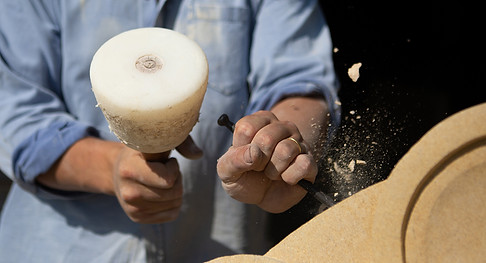
Our association was built on our solidarity for the traditional skills of historical stone carving. All heritage crafts are becoming endangered with the advance in technology and lazy, cost effective design. That the crafts are at risk does not mean that there is no longer a desire for artisanal practices, but rather it is a result of our modern society which prioritises speed. The use of sculptural stone in contemporary, architectural and artistic endeavours is hugely underrepresented.
London Stone Carving strives to raise the profile of our craft through excellence; promoting, developing and teaching our art form so that our ancient craft can continue to progress and thrive.

Heritage Craft and Modern Technology.
A large bulk of stone carving is the removal of material. To get from a block to the rough form of a sculpture takes a lot of work. In the past it would have been done with saws and splitting etc. but for many years now it has been done with angle grinders and pneumatic chisels. These dangerous tools speed up the process enough to make mistakes happen more frequently, but are still too slow to make it cost effective.
Where we really thrive is when we are given an opportunity to explore the application of new technologies to progress the craft and push the limits of stone. We are constantly keeping an eye on the latest advances and carefully, selectively adapting those that will further enrich stone carving without compromising the hand crafted aspects.

Digitisation vs Hand Carving
There is a big difference between embracing technology and employing digitisation. Where as 3D scanning may immeasurably aid a restoration project, or our own developments considerably speed up the roughing out process, todays technology allows a piece of work to be designed on a computer and produced in stone without a finger ever touching it.
Hand carving is like handwriting, every carver will have a subtly distinct feel to their work. The underlying form is consistent but the slight variations in the hand of each carver is the quality which, when brought together, is what gives historic work character. Remove the hand from this process and you are left with carving of unnatural jarring similarity that often has not been considered in its environment.

